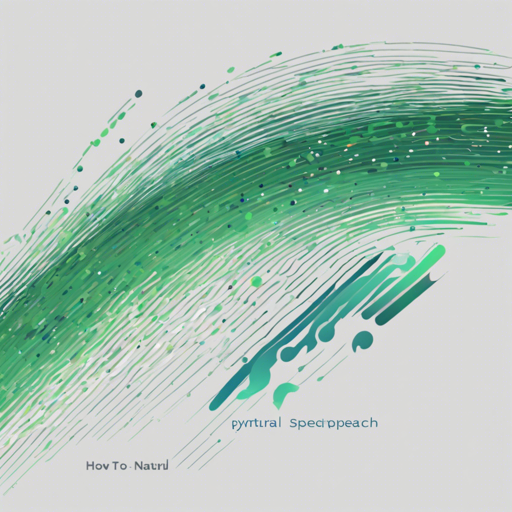Welcome to the fascinating world of Natural Speech 2, a cutting-edge Text-to-Speech (TTS) system capable of producing natural-sounding speech and singing through innovative approaches in artificial intelligence. In this guide, we will walk you through the process of implementing Natural Speech 2 using PyTorch, while offering helpful troubleshooting tips along the way.
What is Natural Speech 2?
Natural Speech 2 utilizes a neural audio codec with continuous latent vectors and a latent diffusion model with non-autoregressive generation. This combination allows it to synthesize text-to-speech in a zero-shot manner, which means it can create voices it has never encountered before—all with incredible fluency.
Installation Steps
To get started with Natural Speech 2, you need to ensure that you have PyTorch installed on your machine. Once you have PyTorch set up, install the Natural Speech 2 package with the following command:
bash
$ pip install naturalspeech2-pytorch
Basic Usage
After installation, you can start using Natural Speech 2. Here’s how you can set up your environment and perform speech synthesis:
python
import torch
from naturalspeech2_pytorch import (EncodecWrapper, Model, NaturalSpeech2)
# Setup encodec as an example
codec = EncodecWrapper()
model = Model(dim=128, depth=6)
# Natural speech diffusion model
diffusion = NaturalSpeech2(model=model, codec=codec, timesteps=1000).cuda()
# Mock raw audio data
raw_audio = torch.randn(4, 327680).cuda()
loss = diffusion(raw_audio)
loss.backward()
# Loop for more raw audio data...
# Generate from the model
generated_audio = diffusion.sample(length=1024) # (1, 327680)
Using Conditions
Natural Speech 2 allows you to add conditions such as prompts and text to influence the generated audio. Here’s an example:
python
import torch
from naturalspeech2_pytorch import (EncodecWrapper, Model, NaturalSpeech2, SpeechPromptEncoder)
# Setup encodec again
codec = EncodecWrapper()
model = Model(dim=128, depth=6, dim_prompt=512, cond_drop_prob=0.25, condition_on_prompt=True)
# Natural speech diffusion model
diffusion = NaturalSpeech2(model=model, codec=codec, timesteps=1000)
# Mock raw audio
raw_audio = torch.randn(4, 327680)
prompt = torch.randn(4, 32768)
text = torch.randint(0, 100, (4, 100))
text_lens = torch.tensor([100, 50, 80, 100])
# Forward and backward
loss = diffusion(audio=raw_audio, text=text, text_lens=text_lens, prompt=prompt)
loss.backward()
# After training
generated_audio = diffusion.sample(length=1024, text=text, prompt=prompt) # (1, 327680)
Trainer Class for Simplified Workflows
If you prefer having a Trainer class to streamline the training and sampling process, here’s how you can create one:
python
from naturalspeech2_pytorch import Trainer
trainer = Trainer(
diffusion_model=diffusion, # diffusion model + codec
folder="pathtospeech",
train_batch_size=16,
gradient_accumulate_every=2,
)
trainer.train()
Troubleshooting Tips
While implementing Natural Speech 2, you may face some challenges. Here are a few troubleshooting tips:
- CUDA Issues: Ensure that you have NVIDIA drivers installed that are compatible with your version of PyTorch.
- Out of Memory (OOM) Error: If you encounter OOM errors, try reducing the batch size or length of audio you are processing.
- Loss Not Decreasing: Make sure your input data is well-prepared and consider adjusting hyperparameters.
For more insights, updates, or to collaborate on AI development projects, stay connected with fxis.ai.
Conclusion
At fxis.ai, we believe that such advancements are crucial for the future of AI as they enable more comprehensive and effective solutions. Our team is continually exploring new methodologies to push the envelope in artificial intelligence, ensuring that our clients benefit from the latest technological innovations.

